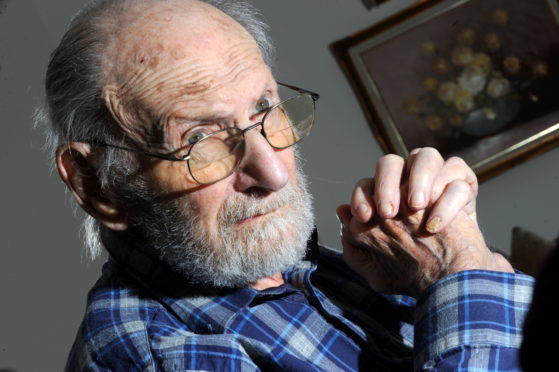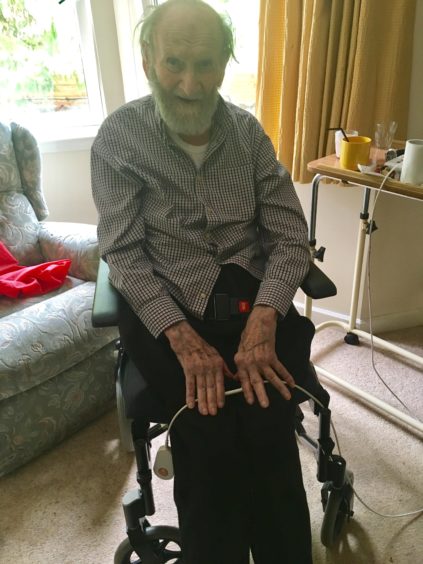He went from being a Nazi refugee to being regarded as an “enemy alien” at Duff House during the Second World War.
Now, family and friends have come together to celebrate the 100th birthday of Dr Ian Lowit, widely regarded as one of the pioneers of psychiatry in Scotland.
The far-travelled medical man, who fought for the Allies during the liberation of Europe, worked for many years as a consultant at Aberdeen Royal Infirmary.
There, he was the catalyst for the creation of the Lowit Unit, which treated scores of adolescents and young adults with a variety of conditions.
Dr Lowit turned 100 yesterday and his daughter, Gillian Lowit, who lives in Stonehaven, presented him with a special cake at Hawkhill House in Bieldside.
She said: “Dad was born in Austria in 1919, but he managed to get out of that country shortly before the start of the Second World War.
“However, when he arrived in Scotland, he was put in an internment camp at Duff House in Banff, where he was regarded as being an ‘enemy alien’.
“It was just the way it was in these days, and he was later moved to Canada, at the time when German prisoners of war started being held at Duff House.
“Eventually, though, he joined the British Army as part of an anti-tank regiment.
“Then, after the war, he advanced in his medical career and was a driving force in the development of the pioneering Lowit Unit at ARI.”
Dr Lowit also helped at the former Craiginches Prison in the Granite City and was involved in the case of Henry Burnett, the last man to be executed in Scotland in 1963.
He believed that Burnett, who was sentenced to death for murder, fell into the category of a psychopathic personality as defined in recent mental health legislation – and thought he should be detained for compulsory treatment in a secure hospital.
But he was unfamiliar with the adversarial nature of a High Court trial.
“I was completely torn to bits by the prosecution,” he said.
“I wasn’t at all prepared for the onslaught. I felt they were trying to ridicule and minimise my evidence.”
The Lowit Unit closed in 2014, having supported children and adolescents with a wide range of conditions, including eating disorders and autism.
His family say Dr Lowit has “loved being in Scotland”, was very proud to be a member of the Cairngorm Club and enjoyed walking in the hills and the mountains.
His daughter added: “That was a big love in his life – he marvelled at the natural beauty of the Scottish countryside. It is something which has given him so much pleasure.”

